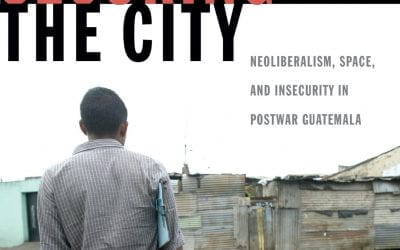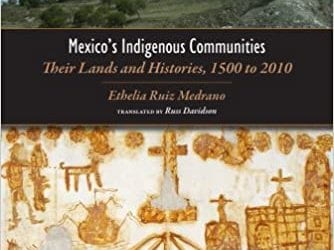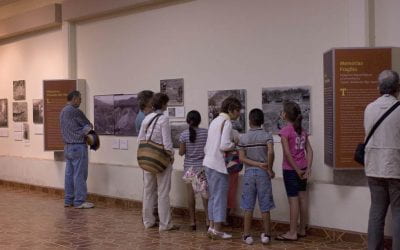Under Fire in Mexico
‘They Hit Us’

Bullets fired at the headquarters of El Siglo de Torreón struck the customer entrance. Nobody was hurt in the attack August 18, 2009. Photo by Javier Garza Ramos.
It was past midnight, in the first minutes of Tuesday, August 18, 2009, when my cell phone rang with a call from the newsroom of El Siglo de Torreón, the daily in Torreón, Mexico, where I work as editor-in-chief. I thought it was a routine call about a breaking story. In a way it was, but the news value was the least of my concerns.
“Ya nos pegaron,” said the frightened voice of the night editor. “They hit us.”
My heart sank. A “hit” might mean many things, the worst being a kidnapped or murdered reporter. In this case, it had been shots from an AK-47 fired at the building from a corner across the street. The bullets hit the customer entrance of our advertising department, which was closed at that hour.
The burst of gunfire had gone unnoticed in the printing department, where the presses were rolling at full speed, but it broke the quiet in the newsroom, where editors were putting the final touches on the next day’s edition. At least 20 rounds had been fired, and the bullets pierced the steel curtain that closed the entrance at night, shattering six windows and putting holes in walls and furniture.
Because the shots were fired at a closed entrance, nobody was hurt, and the only people inside had been well protected by the building itself.
When the night editor called to say “they hit us,” he didn’t need to explain who “they” were. Mexican media have been under attack by organized crime for the last five years, killing 10 journalists, including one in Torreón. Five more would be killed in the months following the attack against El Siglo. Criminals had carried out attacks with grenades or gunfire against the headquarters of news organizations and were forcing the media to impose self-censorship.
The next day we were flooded by calls from Mexican media and national and international press associations expressing sympathy and asking what had happened.
Organized crime is what happened. In the previous two years, Torreón had quickly descended in a spiral of violence linked to the fight among the drug cartels and the offensive against them launched in 2006 by President Felipe Calderón. The number of homicides, kidnappings and street shootouts was on the rise. The proximity of La Laguna region to the border made it a zone coveted by drug cartels. A turf war had erupted.
The face of Torreón is very different from what it was even in the summer of 2006, when I returned to take over the El Siglo newsroom. I had spent the previous 12 years working in Mexico City, Washington and Austin. Even in 2006, with the battle among the drug cartels raging across Mexico, Torreón was still the quiet city where I had grown up, rapidly growing as an agricultural, transportation and industrial hub in northern Mexico.
Drug trafficking had been seldom in the news, but that doesn´t mean it didn’t happen. As far back as the 1970s, La Laguna had been a main crossing point for drugs from the Pacific ports to the United States. The region is the crossroads of northern Mexico, halfway between Mexico City and Ciudad Juárez, and the Pacific coast and the Texas border.
Stories about drug trafficking and cartel activity in La Laguna popped up every now and then, but after 2007, the intensity took everyone by surprise. However, attacks against journalists in the region had been unheard of until 2009, when the events we had seen happening in other parts of the country hit home.
After the attack against El Siglo, officials from the federal government and the Coahuila state government pledged cooperation and a full and swift investigation. But the promises were taken with a grain of salt, because most previous attacks against the media remained unsolved and were quickly forgotten.
Barely three months earlier, in May, Eliseo Barrón, a reporter at La Opinión (our main competitor) had been kidnapped at his house. When our lead police reporter learned of the kidnapping, he thought the criminals would go after more journalists; he was resigned to being kidnapped that same night. They did not get him, but Eliseo Barrón’s body was found the next day in an irrigation canal.
After Barrón was killed, I huddled with my deputy and the city editor to review our crime coverage and find ways to protect ourselves. We had done that before, and as a result, toned down the stories on violence. Fully aware that we did not have government protection, we felt that the only way to protect ourselves was to avoid stepping on anybody’s toes. We did not resort to self-censorship, but decided to pursue a very limited, basic reporting on stories about organized crime, sticking to official information without conducting our own investigations.
After the attack on our building, we reviewed our recent crime coverage, searching for clues about the motive for the hit. But we had published only police reports on murders and shootouts, taking care to omit the names of the cartels and avoid the appearance that we were “keeping score” in their fight to control La Laguna. We didn’t find anything that might have provoked a criminal group. The Coahuila Attorney General told us the most likely motive had been that a group wanted to “heat things up,” calling the attention of the Army and the Federal Police to the region presumably to hit a rival cartel, and believing that the attack on a newspaper would do the trick. But the investigation soon went cold, and we never knew what really happened.
In late 2006 and early 2007 the region came under fire from cartels seeking to control the lucrative routes and the profitable local market for drug selling. Homicides spiked dramatically, from an average of one every four days in 2007 to one every two days in 2008, to one per day in 2009 and almost three daily in 2010. Shootouts breaking out in major avenues infused the population with panic. Commerce fell; the once active nightlife shut down. Innocent bystanders began to be added to the toll—a four year-old boy caught by a bullet during a firefight between the Army and an armed group; a 25-year-old engineer in his house, hit by a bullet from a shootout next door. And dozens more: roughly one out of every ten of the more than 1,500 homicide victims in La Laguna since 2007 have had no connection to organized crime. They’re “collateral damage,” as the government calls them.
That toll of innocent civilians rose sharply in 2010 as the battle turned vicious and the violence more widespread. That year, armed groups attacked two bars and a private party, shooting people at random. Ten people died in an attack in January, another eight in a hit in May, and 17 more in July. All were without any connection to the drug cartels. In June, hitmen (sicarios) attacked a drug rehabilitation center, killing 11 people because some of them had been drug dealers from rival gangs.
The impact in the newsroom was a mix of shock and powerlessness. We rushed to report the wave of violence, but the possibility of an attack and the lack of protection from the authorities prevented us from going into the depth and breadth called for in a story of this magnitude, with its dramatic effect on the population.
Our limits were put to the test in late July. The Zetas cartel posted a video on YouTube showing a local cop being interrogated by hitmen at gunpoint, confessing that the sicarios that attacked the bars in Torreón were inmates at the jail in neighboring Gómez Palacio, who had been let out by the warden to carry out the killings. The inmates were associated with the Sinaloa cartel, and the jail was then taken over by federal authorities.
A few days later, while reporting the Federal Police presence at the jail, two cameramen and one reporter from two TV stations (Televisa and Milenio) were kidnapped. One of our reporters had been with them until 15 minutes before the abduction; when he returned to file his story, we sent another reporter to replace him, but pulled him from the scene as soon as we learned about the TV crews. For the next five days we did not send anyone to cover any story in Gómez Palacio, no matter how trivial.
As it turned out, the kidnapping had been a way for the Sinaloa cartel to blackmail Televisa and Milenio into broadcasting interrogation videos of their own, in which police officers talked about links between local politicians and the Zetas.
After pressure from news organizations and press associations, and widespread international coverage, the Federal Police rescued the reporters and arrested eight people. But a dangerous precedent had been set: if a cartel doesn’t like certain coverage, it can always kidnap a reporter to force his newspaper or TV station into running its own version.
The kidnapping also reinforced our strategy of doing basic reporting on violent episodes, and we found a way to make up for it with stories about crime statistics, the spike in armed robberies, the social and economic impact of violence, the testimonials of people living under its shadow, and the links between poverty, unemployment and crime.
But the incident had left a deep scar among journalists in La Laguna, dramatically underlining the threat. Our feelings were symbolized by the editorial that El Diario de Juárez ran in September after the murder of one of their photographers. “What do you want from us?” El Diario asked the cartels in Ciudad Juárez, addressing them as the “de facto” authorities of the city.
For three years, I had been thinking long and hard about what circumstances I would have to face for writing an editorial like that. But my thoughts were always private, quietly hoping that, as an editor responsible for the safety of El Siglo’s reporters, I would never be confronted with that situation. Until now I have been spared, but other editors and reporters have had to face it, and maybe it’s just a matter of time. In these days in La Laguna, a hit is always around the corner.
Spring 2013, Volume XII, Number 3
Javier Garza Ramos is editor-in-chief of El Siglo de Torreón in Torreón, Mexico. He studied in the Universidad Iberoamericana and the University of Texas at Austin, and has worked as editor and reporter for Reforma in Mexico City, and Rumbo de Austin.
Related Articles
Securing the City: Neoliberalism, Space, and Insecurity in Postwar Guatemala
Guatemala City is a difficult place to live, much less to love. Smoke-belching buses clog its arteries, lurching past shantytown-lined ravines, down once-grand boulevards, and through the hardscrabble neighborhoods of the working poor, against which the glitz of the…
Mexico’s Indigenous Communities: Their Lands and Histories, 1500-2010
Mexico’s Indigenous Communities: Their Lands and Histories, 1500-2010 lives up to its ambitious title. In only 291 pages of dense near-encyclopedic history, Ruiz Medrano orders an enormous corpus of facts and arguments to provide a Post-Conquest review of indigenous…
Making a Difference: Inheritors of History
The two sandal-clad ten-year-old girls in bobbing ponytails might have been tourists or children on a school excursion. Instead, these enthusiastic youths were explaining the background of the Fragile Memories: Archaeology and Community, Copán, Honduras 1891-1900…




